Israel is widely believed to possess nuclear weapons, but has never confirmed the existence of its nuclear program. Historians have largely relied on limited access to U.S. government documents and on the oral histories of those with inside knowledge of Israel’s nuclear program. Without access to the Israeli nuclear archive, it is impossible to know the complete story.
Early Development
The State of Israel was officially declared in 1948, ending the British Mandate of Palestine. Israeli Prime Minister David Ben-Gurion soon ordered the initial development of Israel’s nuclear program. As he wrote in a 1948 pamphlet for new recruits of the Israel Defense Forces (IDF), “We are living in an age of scientific revolutions, an era that discloses the atom, its miraculous composition and the tremendous power hidden in it.” Ben-Gurion’s desire for the bomb reflected his commitment to Zionism, the political movement for an independent Jewish nation. More specifically, he believed that the development of science and technology were vital to the success of the Zionist dream. According to Shimon Peres, “Ben-Gurion believed that Science could compensate us for what Nature has denied us.”
In 1949, the IDF conducted a geological survey of the Negev desert, where they found some sources of uranium in phosphate deposits. Ben-Gurion also began recruiting scientists for the Israeli nuclear program. “What Einstein, Oppenheimer and Teller, the three of them are Jews, made for the United States,” he later explained, “could also be done by scientists in Israel for their own people.” One such scientist was chemist Ernst David Bergmann. Born in Germany, Bergmann studied at the University of Berlin and first came to then-Palestine in 1934. In 1952, he was named chairman of the newly created Israel Atomic Energy Commission (IAEC). Bergmann also served as the head of the Ministry of Defense’s Research and Infrastructure Division (EMET)—reorganized in 1958 as the Armaments Development Authority (RAFAEL)—which was eventually charged with weaponizing the bomb.
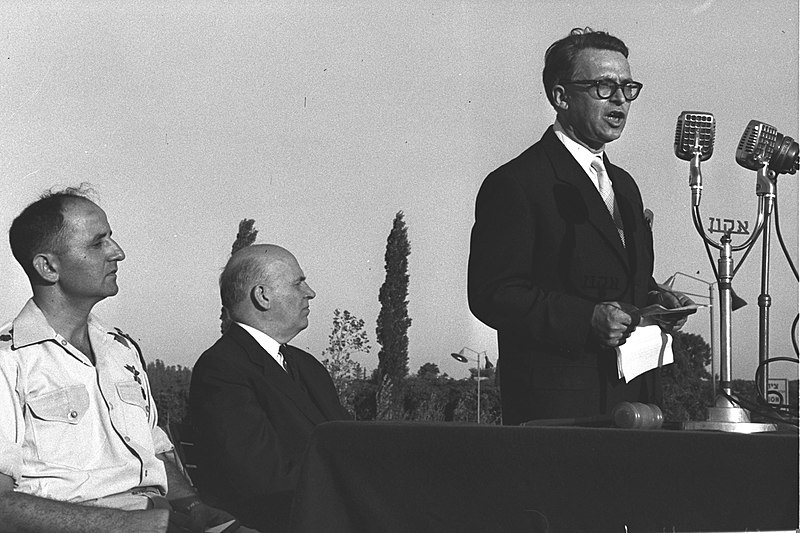
Bergmann, however, was not a particularly effective administrator. Shimon Peres, who was later elected prime minister of Israel, was the de facto head of the nuclear program by 1955. “Ben-Gurion trusted me. Professor Bergmann worked with me with no reservations,” remembered Peres. “In time, I was able to win the trust and confidence of the other scientists, engineers and senior personnel engaged in the project.” The three men—Ben-Gurion, Bergmann, and Peres—together shaped the direction of the Israeli nuclear program during its early years.
Israel’s desire for a bomb was also closely connected to the memory of the Holocaust, in which six million Jews were killed at the hands of Nazi Germany. Historian Avner Cohen explained the connection between the Israeli nuclear program and the Holocaust: “The commitment ‘never again’ means that in order to prevent another Auschwitz, we must be in position to threaten explicitly, implicitly, to have the capability to do what was done in Hiroshima. That will prevent or deter another Auschwitz.” As Bergmann put it, an Israeli bomb would ensure “that we shall never again be led as lambs to the slaughter.”
Cooperation with France
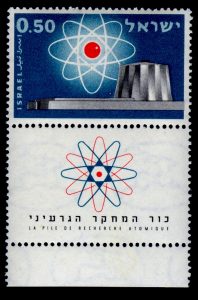 Israel’s leadership team quickly realized that enlisting outside help was the easiest path to the bomb. In 1955, the United States agreed to sell Israel a small research reactor under the auspices of the “Atoms for Peace” program. Although plutonium production was not allowed under the agreement, a secret report by Bergmann showed Israel’s intentions to use the American reactor to build a larger research complex. A 1956 letter between project officials likewise spoke of an “upgrade” to the American reactor “to conduct more advanced experiments in plutonium separation.” It became clear, however, that this limited American assistance would not be sufficient to develop a viable nuclear program.
Israel’s leadership team quickly realized that enlisting outside help was the easiest path to the bomb. In 1955, the United States agreed to sell Israel a small research reactor under the auspices of the “Atoms for Peace” program. Although plutonium production was not allowed under the agreement, a secret report by Bergmann showed Israel’s intentions to use the American reactor to build a larger research complex. A 1956 letter between project officials likewise spoke of an “upgrade” to the American reactor “to conduct more advanced experiments in plutonium separation.” It became clear, however, that this limited American assistance would not be sufficient to develop a viable nuclear program.
France soon emerged as Israel’s closest political ally during its early years. Shimon Peres proved to be instrumental in getting French support for the Israeli nuclear program. During the early 1950s, the French nuclear program was in the process of building a sprawling complex of nuclear reactors across France. Chemist Bertrand Goldschmidt—the only Frenchman to work on the Manhattan Project in the United States—recalled a secret meeting in September 1956 when the two countries agreed on a deal to expand Israel’s “nuclear capacity.” Goldschmidt noted, however, the need for the Franco-Israeli agreement to remain a secret. “[French officials] say, ‘We are willing, but we absolutely don’t want to be blacklisted by the Arabs and we don’t want to appear in name and we want this to be quite secret,’” he explained. “So it had to be secret.”
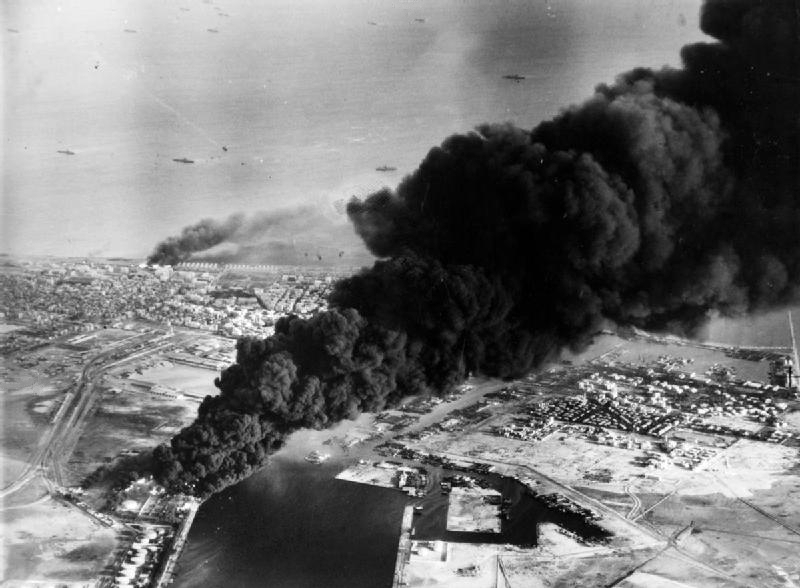 One month later, an alliance of French, British, and Israeli forces invaded the Sinai Peninsula after Egyptian President Gamal Abdel Nasser announced plans to nationalize the Suez Canal. Political pressure from the United States and the Soviet Union forced the alliance to withdraw from Egypt, humiliating the invaders. Although Franco-Israeli nuclear cooperation had already started by this point, the Suez Crisis was a turning point in France’s decision to assist Israel. In the aftermath, French Prime Minister Guy Mollet reportedly affirmed that France “owed” Israel. “There was a tendency to try to export and there was a general feeling of support for Israel,” said Andre Finkelstein, an official at the French Atomic Energy Commission.
One month later, an alliance of French, British, and Israeli forces invaded the Sinai Peninsula after Egyptian President Gamal Abdel Nasser announced plans to nationalize the Suez Canal. Political pressure from the United States and the Soviet Union forced the alliance to withdraw from Egypt, humiliating the invaders. Although Franco-Israeli nuclear cooperation had already started by this point, the Suez Crisis was a turning point in France’s decision to assist Israel. In the aftermath, French Prime Minister Guy Mollet reportedly affirmed that France “owed” Israel. “There was a tendency to try to export and there was a general feeling of support for Israel,” said Andre Finkelstein, an official at the French Atomic Energy Commission.
In 1957, France began building a 24 megawatt nuclear reactor for Israel. The Israeli government purchased 20 tons of heavy water—high density water used in nuclear chain reactions—from Norway for the reactor. French engineers also helped with the construction of the Negev Nuclear Research Facility near Dimona, and there were allegedly as many as 2,500 Frenchmen secretly living in Dimona by the end of the 1950s. “French workers at Dimona were forbidden to write directly to relatives and friends in France and elsewhere, but sent mail to a phony post-office box in Latin America,” reported American journalist Seymour Hersh.
There has been some speculation that French assistance to Israel went beyond the development of nuclear energy. Historian Avner Cohen, for example, discussed the rumor “that Israeli scientists might have been present during the first [French atomic bomb] test [in 1960]. I believe as part of that agreement, there are strong rumors that some Israeli senior scientists were observing the first French tests in the Sahara.” There is, however, no proof to date of an Israeli presence at the French test.
Tensions with the United States
American satellites first spotted the Dimona nuclear complex in 1958. U.S. intelligence was likely aware that an Israeli nuclear weapons program was possible, as a 1960 CIA report concluded, “The secrecy and deception surrounding the undertaking [at Dimona] suggest that it is intended at least in part for the production of weapon-grade plutonium.” The United States was also aware of Franco-Israeli nuclear collaboration, although France denied the claim.
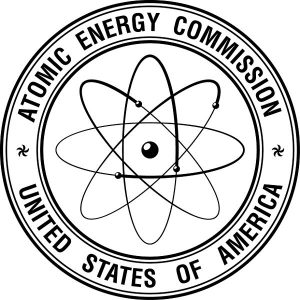 It was not until President John F. Kennedy took office in 1961, however, that the United States began to exert serious pressure on Israel to prevent nuclear weapons development. The United States feared that a nuclear Israel would upset the balance of power in the Middle East and cause neighboring Arab states to side with the Soviet Union in the Cold War. At a meeting with Kennedy in Manhattan in May 1961, Ben-Gurion allegedly assured the American President that Israel had “no intention to develop weapons capacity now.”
It was not until President John F. Kennedy took office in 1961, however, that the United States began to exert serious pressure on Israel to prevent nuclear weapons development. The United States feared that a nuclear Israel would upset the balance of power in the Middle East and cause neighboring Arab states to side with the Soviet Union in the Cold War. At a meeting with Kennedy in Manhattan in May 1961, Ben-Gurion allegedly assured the American President that Israel had “no intention to develop weapons capacity now.”
The Israeli government ultimately agreed to a series of American inspections. In May 1961, the Atomic Energy Commission (AEC) sent its first inspectors to Dimona. AEC officials concluded that the site “was conceived as a means for gaining experience in construction of a nuclear facility which would prepare them for nuclear power in the long run” and that American scientists were “satisfied that nothing was concealed from them and that the reactor is of the scope and peaceful character previously described to the United States by representatives of the Government of Israel.” A second inspection in September 1962 affirmed that Dimona only had a research reactor and was not capable of producing weapons grade plutonium.
American officials were largely satisfied with the inspections at the time. As AEC inspector Edwin Kinter later remembered, “We really went into every aspect, every site, every building that we wanted to and I think covered it with a fine tooth comb.” Nevertheless, other reports have suggested that the inspections were a farce. Inspectors were not allowed to use their own equipment nor collect samples, while one inspector recalled seeing evidence of freshly plastered and painted walls. Regardless of how the inspections were conducted, it is now clear that the United States government was woefully misinformed as to the extent of Israel’s nuclear program at the time.
Tensions between the United States and Israel arose once again in 1964. With the rise of nationalist President Charles de Gaulle in 1958, French nuclear assistance had largely dried up, forcing Israel to look elsewhere for nuclear materials. In 1963, Israel struck a secret agreement with Argentina to buy as much as 100 tons of uranium ore, otherwise known as yellowcake. The United States was informed of the sale by Canadian intelligence in 1964. Israeli officials, however, evaded American questions and never gave a clear answer as to the extent of the agreement. Meanwhile, a 1964 National Intelligence Estimate incorrectly concluded that Israel’s “major deficiency, in terms of a weapons program, is the lack of a plutonium separation plant.”
The Nixon-Meir Agreement
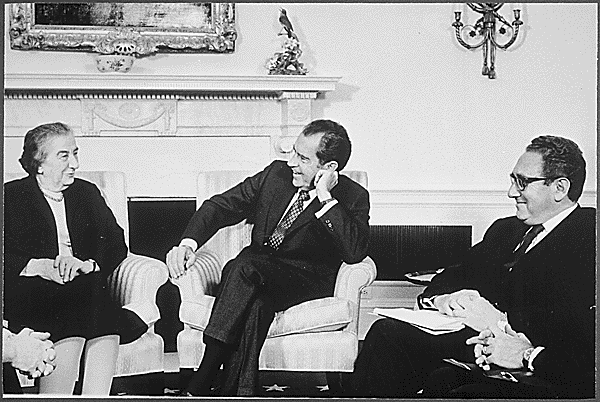 Without access to Israel’s nuclear weapons archive, it is impossible for historians to know exactly when Israel first possessed a nuclear weapon. Estimates range from 1965 to 1968; the most commonly cited date is 1967. By 1969, American officials concluded that the Israeli nuclear program had advanced to a point “whereby all the components for a weapon are at hand, awaiting only final assembly and testing.” This conclusion put the United States—at the time pushing the Nuclear Non-Proliferation Treaty (NPT)—in a difficult position regarding Israel.
Without access to Israel’s nuclear weapons archive, it is impossible for historians to know exactly when Israel first possessed a nuclear weapon. Estimates range from 1965 to 1968; the most commonly cited date is 1967. By 1969, American officials concluded that the Israeli nuclear program had advanced to a point “whereby all the components for a weapon are at hand, awaiting only final assembly and testing.” This conclusion put the United States—at the time pushing the Nuclear Non-Proliferation Treaty (NPT)—in a difficult position regarding Israel.
Israel was reluctant to sign the NPT, which would have required a pledge that it was not developing nuclear weapons. The Israeli government was likewise opposed to revealing the existence of its nuclear program; doing so might trigger a nuclear arms race in the Middle East. On September 26, 1969, President Richard Nixon met with Israeli Prime Minister Golda Meir at the White House. Prior to the meeting, Nixon was briefed by the State Department that “Israel might very well now have a nuclear bomb” and at the very least “had the technical ability and material resources to produce weapons grade uranium for a number of weapons.”
There is no official record from the meeting available to the public, but it is widely believed that Nixon and Meir came to an understanding on the Israeli nuclear program. Historian Avner Cohen explained the agreement: “Israel would refrain [from] testing, would refrain keeping a high profile, would refrain announcement or declaration. In return, the United States would look the other way, and would no longer press Israel to sign the NPT.” The deal worked well for both sides. Israel would not be forced to reveal its nuclear program, while the United States was assured that an Israeli bomb would not upset the global geopolitical order.
Possible Use: 1967, 1973, and 1979
 While Israel has never publically acknowledged the existence of its nuclear program, there is some speculation that the Israeli government considered a nuclear test during the 1967 Six-Day War. Otherwise known as the Third Arab-Israeli War, the conflict began on June 4, 1967, when Israel bombed Egyptian airfields and launched a ground invasion of the Sinai Peninsula. Avner Cohen estimated that Israel had the materials for a bomb on the eve of the war and was building a “primitive device.” According to Cohen, the Israeli government planned a demonstration of the bomb as a last resort. “The idea was in case everything goes wrong, Israel can demonstrate capability by a demonstration shot,” he explained. In the end, a demonstration was not necessary. The war ended on June 10 in an overwhelming Israeli victory.
While Israel has never publically acknowledged the existence of its nuclear program, there is some speculation that the Israeli government considered a nuclear test during the 1967 Six-Day War. Otherwise known as the Third Arab-Israeli War, the conflict began on June 4, 1967, when Israel bombed Egyptian airfields and launched a ground invasion of the Sinai Peninsula. Avner Cohen estimated that Israel had the materials for a bomb on the eve of the war and was building a “primitive device.” According to Cohen, the Israeli government planned a demonstration of the bomb as a last resort. “The idea was in case everything goes wrong, Israel can demonstrate capability by a demonstration shot,” he explained. In the end, a demonstration was not necessary. The war ended on June 10 in an overwhelming Israeli victory.
Israel once again considered a nuclear test in 1973 during the Yom Kippur War. On the holiest day of the Jewish calendar, Egypt and Syria launched a coordinated surprise attack on Israel in an effort to reclaim the Israeli-occupied Sinai Peninsula and the Golan Heights. The darkest day of the war for Israel came on October 7, 1973. Israeli forces were losing ground and faced a likely invasion by Jordan. Top Israeli officials held a meeting with Prime Minister Golda Meir to discuss options. According to Arnan “Sini” Azaryahu, a government aide present at the meeting, Defense Minister Moshe Dayan proposed a “nuclear demonstration.” Meir, however, rejected the proposal. The war once again ended with an Israeli victory.
Unlike other nuclear powers, Israel has never conducted a recognized nuclear test. There is some speculation, however, that the 1979 Vela incident—in which an American satellite recorded a double flash of light over the Indian Ocean—was the result of a joint South African-Israeli nuclear test. During the 1970s, Israel provided technical support for the South African nuclear program in exchange for a supply of yellowcake. Mathematician Leonard Weiss, at the time the staff director of the Senate Subcommittee on Energy and Nuclear Proliferation, was told to keep quiet about the incident. “I was told it would create a very serious foreign policy issue for the U.S., if I said it was a test,” recalled Weiss. “Someone had let something off that US didn’t want anyone to know about.”
Nuclear Opacity
Israel has long enforced a policy of opacity, or amimut, with regards to its nuclear program. As Avner Cohen explained, “Amimut is the overall public trademark of Israel’s bargain with the bomb. It combines secrecy, ambiguity and taboo.” During the early years of the nuclear program, opacity was a strategic decision intended to preserve Israel’s nuclear monopoly in the Middle East. Coming out in the open might push other nations to develop a bomb.
Amimut has since become part of Israeli political culture. Israel has never confirmed that it has nuclear weapons and is deliberately ambiguous about its nuclear program. Avner Cohen speculated about the connection between opacity and the Holocaust: “I believe that the depth of the Israeli unique stance of ‘to have and not to have’ is a reflection of something deeper, something in the Israeli psyche that had to do with anxiety about the Holocaust, and Holocaust as playing a role for both inertia and momentum and resolve on the technology side.” As recently as 2011, Prime Minister Benjamin Netanyahu affirmed, “We won’t be the first to introduce nuclear weapons into the Middle East.”
In 1986, nuclear technician Mordechai Vanunu revealed the existence of Israel’s nuclear program to the British press. Vanunu gave details of the eight years he spent working at Dimona and provided photographs that he had secretly taken of the nuclear complex. Israel sentenced Vanunu to 18 years in prison for treason and espionage, and he continues to face legal issues today.
The Israeli Nuclear Program Today
Modern Israeli nuclear policy includes the Begin Doctrine, which supports military action to prevent its enemies from acquiring nuclear weapons. The policy began with the 1981 bombing of Iraq’s Osiraq reactor, which Prime Minister Menachem Begin called “a precedent for every future government in Israel.” In 2007, Israel conducted an airstrike against a suspected Syrian nuclear reactor in accordance with the Begin Doctrine. The Stuxnet computer virus—a joint American-Israeli project—was responsible for significant delays in Iran’s nuclear program during the early years of President Barack Obama’s administration.
Israel today is believed to possess an arsenal of at least 80 nuclear warheads and enough materials for over 100 additional bombs. It maintains a classic nuclear triad to ensure deterrence: fighter jets, submarine-launched cruise missiles (SLCMs), and Jericho missiles, including intercontinental ballistic missiles (ICBMs). The Israeli government has never acknowledged its nuclear capabilities and it continues the policy of amimut.





1968.jpg)